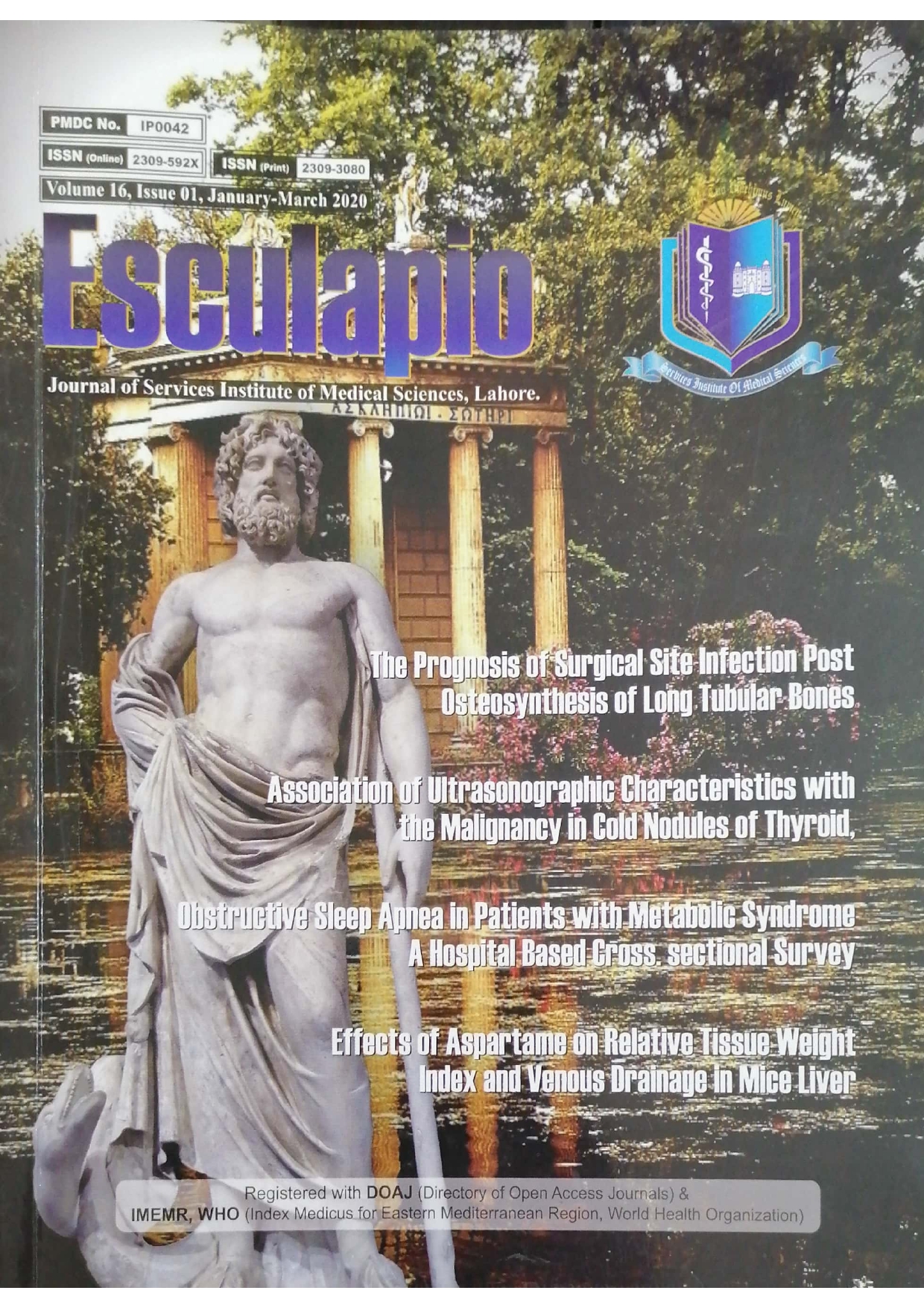Obstructive Sleep Apnea in patients with Metabolic syndrome - A hospital Based Cross-Sectional Survey
DOI:
https://doi.org/10.51273/esc20.716113Keywords:
obstructive sleep apnea (OSA),, polysomnography, excessive daytime sleepiness (EDS),, apnea-hypopnea index (AHI), metabolic syndrome (MS)Abstract
Objective: To determine frequency of OSA amongst patients with Metabolic Syndrome.
Methods: This was a hospital based cross-sectional study done in adult patients with MS who
visited Lahore General Hospital from march 2019 to August 2019. Patients meeting the criteria
for metabolic syndrome according to the new IDF definition3 (as described earlier) were screened
for symptoms of OSA. Patients with end organ disease, hypothyroidism, critical illness and
neoplasms were excluded from the study. Epworth sleepiness scale (ESS) questionnaire was
used to evaluate EDS. Patients with symptoms indicative of OSA and ESS score of more than 10
underwent a limited sleep study with three channels recording nasal airflow measurement, chest
movement and pulse oximetry. AHI > 5/Hr was considered positive for OSA. The limited PSG data
was analysed and a diagnosis of OSA was made if the Apnea-Hypopnea index was >5 per hour.
Further, OSA was graded as mild, moderate or severe as follows: AHI 5-15/hr: MILD OSA AHI 15-
30/hr: MODERATE OSA AHI>30/hr: SEVERE OSA.
Results: Mean age of patients with OSA in our study was 55±9 years. OSA was found in 35
(37%) patients screened with ESS score>10. Twenty one out of 53 (39.6%) males and 14 out of
41 (34.1%) females had OSA. Even though the number of males was more than females in OSA
group, there was no statistically significant difference between both gendes (p=0.37). Body mass
index and Neck circumference were found to be significantly higher in OSA group compared with
Non OSA group. Other parameters like Age, systolic and diastolic BP were not found to be
significantly associated with OSA.
Conclusions: The study showed that there is a very high prevalence of OSA among patients
with MS compared to that in the general population thus mandating the need for screening MS
patients for undiagnosed OSA










